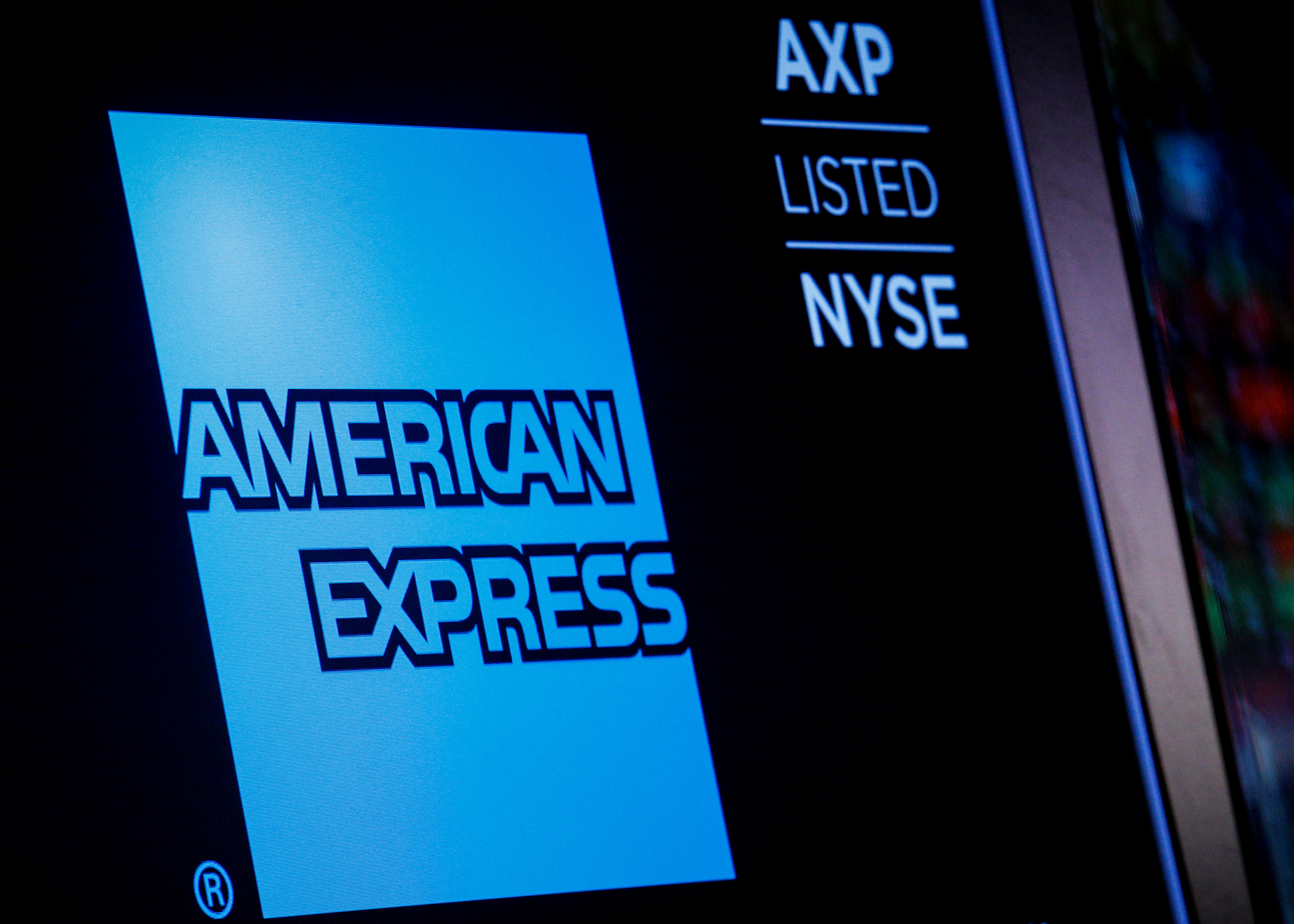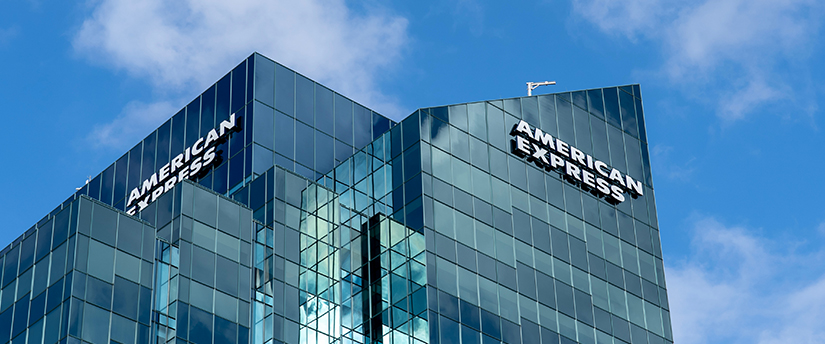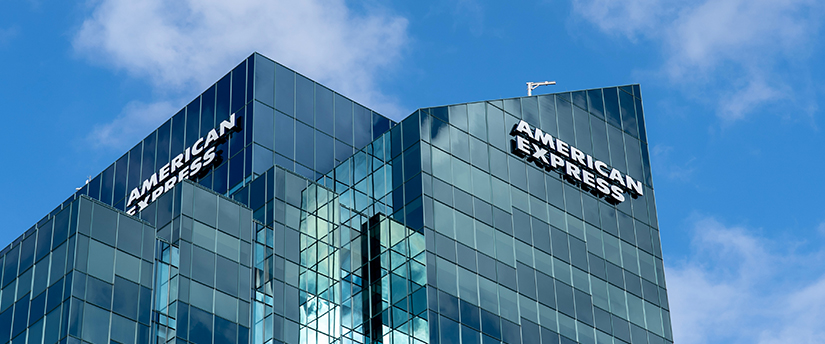American Express Receives Bullish Price Target from Analysts

- Wells Fargo sets a new price target for American Express at $285, indicating a potential growth of 21.53%.
- Keefe, Bruyette & Woods raises its price target for American Express to $280 and maintains an "Outperform" rating.
- Following these analyst updates, American Express shares saw a modest increase, reflecting positive investor sentiment.
Donald Fandetti of Wells Fargo has recently set a new price target for NYSE:AXP (American Express) at $285, significantly higher than its current price of $234.51. This adjustment indicates a bullish stance on the stock, suggesting an anticipated growth of about 21.53%. Such a positive outlook from a reputable analyst can often influence investor sentiment and market performance of the stock in question. This development, reported on Tuesday, July 9, 2024, is seen as a key indicator of American Express's potential in the financial sector, as covered by TheFly.
American Express, a leading global services company, offers customers access to products, insights, and experiences that enrich lives and build business success. It operates in a competitive financial services market, facing off against other credit card companies and financial institutions. The company's ability to maintain a strong market position is critical, and analyst ratings like those from Wells Fargo and Keefe, Bruyette & Woods play a significant role in shaping investor perceptions.
Keefe, Bruyette & Woods, another respected firm, has also shown confidence in American Express by raising its price target from $265 to $280 and maintaining an "Outperform" rating. This adjustment aligns with the positive sentiment expressed by Wells Fargo and underscores a broader optimism about the company's future performance. Following these updates, American Express shares saw a modest increase of 0.3%, closing at $235.63. This price movement is reflective of the broader trends in analyst ratings and investor reactions to such forecasts.
The stock's recent performance, with a slight decrease of $1.12 to close at $234.51 and its fluctuation between $233.76 and $239.5 on the day of the announcement, demonstrates the market's responsiveness to analyst ratings and financial news. Over the past 12 months, American Express has seen its price range from $140.91 to $244.41, indicating significant volatility but also the potential for substantial growth. With a market capitalization of about $168.68 billion and a trading volume of 1,851,621 shares, American Express remains a heavyweight in the financial sector, closely watched by investors and analysts alike.
These recent price target adjustments by Wells Fargo and Keefe, Bruyette & Woods highlight a growing confidence in American Express's ability to perform well in the future. Such bullish outlooks from top Wall Street analysts not only reflect the company's solid fundamentals and potential for growth but also influence the stock's market performance, as seen in the slight uptick following the announcements. As the financial landscape continues to evolve, American Express's position and performance will be key areas of interest for investors and market watchers.
| Symbol | Price | %chg |
|---|---|---|
| V.BA | 27300 | 0.66 |
| MA.BA | 24260 | 0.21 |
| AXP.BA | 30860 | 0.65 |
| BFIN.JK | 750 | -0.67 |

American Express Company's Capital Efficiency Outshines Peers
American Express Company (NYSE: AXP) is a global financial services corporation known for its credit card, charge card, and travel-related services. It competes with major players like Visa Inc. (NYSE: V) and Mastercard Incorporated (NYSE: MA) in the payment processing industry. AXP's financial performance is often compared with these peers to assess its market position and capital efficiency.
American Express boasts a Return on Invested Capital (ROIC) of 106.28%, significantly higher than its Weighted Average Cost of Capital (WACC) of 10.37%. This results in a robust ROIC to WACC ratio of 10.25, indicating that AXP generates substantial returns on its investments relative to its cost of capital. This efficiency is a key strength for the company.
In comparison, Visa Inc. has a ROIC of 29.89% and a WACC of 8.17%, leading to a ROIC to WACC ratio of 3.66. While Visa's ratio is positive, it is notably lower than that of American Express, suggesting that AXP is more effective in utilizing its capital to generate returns.
Mastercard Incorporated, with a ROIC of 43.98% and a WACC of 8.61%, achieves a ROIC to WACC ratio of 5.11. While Mastercard's capital efficiency is commendable, it still trails behind American Express and Goldman Sachs in this metric.

American Express Company (NYSE: AXP) Financial Efficiency Analysis
- American Express boasts a ROIC of 106.28% significantly higher than its WACC of 10.36%, indicating strong capital efficiency.
- Wells Fargo's low ROIC to WACC ratio of 0.29 suggests less effective capital utilization compared to its peers.
American Express Company (NYSE: AXP) is a global financial services corporation known for its credit card, charge card, and travel-related services. It competes with major players like Visa, Mastercard, and financial institutions such as Wells Fargo. Analyzing its Return on Invested Capital (ROIC) against the Weighted Average Cost of Capital (WACC) provides insights into its financial efficiency.
American Express boasts a ROIC of 106.28%, significantly higher than its WACC of 10.36%. This results in a ROIC to WACC ratio of 10.25, indicating that the company is using its capital efficiently and generating strong profits. This efficiency is a key indicator of the company's ability to create value for its shareholders.
In comparison, Visa Inc. has a ROIC of 29.89% and a WACC of 8.26%, resulting in a ROIC to WACC ratio of 3.62. While Visa is profitable, its capital efficiency is lower than that of American Express. Mastercard also shows strong performance with a ROIC of 43.98% and a WACC of 8.73%, leading to a ratio of 5.04, which is still below American Express.
Wells Fargo & Company, on the other hand, has a ROIC of 3.24% and a WACC of 11.36%, resulting in a low ROIC to WACC ratio of 0.29. This indicates that Wells Fargo is not utilizing its capital as effectively as its peers, which could impact its profitability.

American Express Drops 3% Despite Posting Q2 Beat
American Express (NYSE:AXP) shares dropped more than 3% intra-day today despite the company reporting second-quarter earnings that exceeded expectations, driven by record card member spending and solid revenue growth.
The credit card giant posted adjusted earnings per share of $4.08, beating the consensus estimate of $3.87. Revenue reached $17.86 billion, slightly above the $17.7 billion forecast, and marked a 9% year-over-year increase.
Card member spending hit a new quarterly record at $416.3 billion, up 7% from the same period last year, highlighting strong consumer and business activity across the company’s network.
American Express reaffirmed its full-year 2025 guidance, projecting earnings per share between $15.00 and $15.50, in line with analyst expectations of $15.22. The company also maintained its revenue growth forecast of 8% to 10% for the year, signaling continued confidence in its growth trajectory despite a complex economic backdrop.

American Express Company (NYSE: AXP) Price Target and Financial Outlook
- The average price target for American Express Company (NYSE: AXP) has slightly decreased from $306.33 to $302 in the last month, yet shows an increase from the previous year's target of $279.54.
- Recent earnings reports highlight strong performance in the Global Consumer Services Group, contributing to optimistic price targets.
- Despite short-term market volatility, long-term outlook remains positive due to strong fundamentals and strategic initiatives.
American Express Company (NYSE: AXP) is a global financial services corporation known for its credit card, charge card, and travel-related services. It competes with other major players like Visa and Mastercard. Over the past year, the consensus price target for AXP has experienced fluctuations, reflecting analysts' changing expectations based on various factors.
Last month, the average price target for AXP was $302, showing a slight decrease from the previous quarter's $306.33. This dip might be influenced by recent market volatility in the financial sector, as highlighted by recent news. However, the target still represents an increase from last year's $279.54, indicating a generally positive outlook over the year.
American Express's recent earnings report showed strong performance in its Global Consumer Services Group, which may have contributed to the optimistic price targets seen last quarter. The company's strategic partnerships and expansions in travel and lifestyle services also play a role in shaping analysts' positive expectations.
Despite the recent dip in the price target, the overall trend suggests growing confidence in AXP's potential. The financial sector's volatility might have impacted short-term expectations, but the company's strong fundamentals and strategic initiatives continue to support a positive long-term outlook.
Investors should consider these factors, along with the company's upcoming earnings report, which is anticipated to show growth. Analyst Mark DeVries from Barclays has set a price target of $145 for AXP, reflecting a positive sentiment towards the company's financial performance.

American Express (NYSE:AXP) Quarterly Earnings Preview
- The anticipated earnings per share (EPS) is $3.86, with projected revenues of $17.7 billion.
- Expected EPS represents a 10.6% increase from the previous year, driven by strong network volumes and card growth.
- Revenue is projected to reach $17.7 billion, marking an 8.3% increase year over year.
American Express (NYSE:AXP) is a leading global financial services company known for its credit card, charge card, and travel-related services. As it prepares to release its quarterly earnings on July 18, 2025, analysts are keenly observing the company's performance metrics. The anticipated earnings per share (EPS) is $3.86, with projected revenues of $17.7 billion.
The company's expected EPS of $3.86 represents a 10.6% increase from the previous year, driven by strong network volumes and card growth. This growth is further supported by an 11.8% rise in discount revenues, which are fees collected from merchants for card transactions. These factors are likely to offset any cost pressures, enhancing the company's earnings potential.
American Express's revenue is projected to reach $17.7 billion, marking an 8.3% increase year over year. This growth is attributed to a 3.2% increase in the number of cards in force and a 13% rise in interest income. These metrics indicate a healthy expansion in the company's core operations, contributing to its overall financial performance.
The company's financial outlook has seen positive sentiment, with four upward revisions in earnings estimates over the past 60 days. This suggests confidence in American Express's ability to meet or exceed expectations. The absence of revisions in the consensus EPS estimate over the past 30 days further underscores analysts' confidence in their initial forecasts.
American Express's financial ratios provide additional insights into its valuation. With a price-to-earnings (P/E) ratio of 21.28, investors are willing to pay $21.28 for every dollar of earnings. The company's debt-to-equity ratio of 1.69 indicates a balanced approach to financing its assets. These metrics, along with an earnings yield of 4.70%, reflect the company's financial health and investment potential.

American Express (NYSE: AXP) Surpasses Earnings and Revenue Estimates
- Earnings Per Share (EPS) of $3.64, beating the estimated $3.47.
- Revenue reached approximately $16.97 billion, slightly above the forecast of $16.94 billion.
- Shares rose by less than 1% post-announcement, despite a 15% decline year-to-date.
American Express (NYSE: AXP) is a leading global financial services company known for its credit card, charge card, and travel-related services. Competing with giants like Visa and Mastercard, American Express reported an EPS of $3.64 on April 17, 2025, surpassing the estimated $3.47. The company also reported a revenue of approximately $16.97 billion, slightly exceeding the estimated $16.94 billion.
The company's quarterly earnings reveal a profit of $3.64 per share, surpassing the Zacks Consensus Estimate of $3.45. This marks an improvement from the previous year's earnings of $3.33 per share. The positive growth trajectory is driven by robust consumer spending, as highlighted by CEO Stephen Squeri. He noted that consumer spending in the first quarter was consistent with, and often better than, 2024 levels.
American Express's revenue increased by 7% year-over-year to $16.97 billion, exceeding analysts' predictions. Net interest income also slightly surpassed expectations, reaching $4.17 billion compared to the consensus of $4.10 billion.
Despite the positive earnings report, American Express shares rose by less than 1% immediately following the announcement. The stock had been down approximately 15% for the year. Recently, Bank of America analysts upgraded the stock's rating to "buy," citing the company's "high-quality customer base" as a factor that would support its resilience.
American Express maintains a price-to-earnings (P/E) ratio of approximately 17.76, indicating the market's valuation of its earnings. The company's price-to-sales ratio stands at about 2.52, and the enterprise value to sales ratio is around 2.67. The debt-to-equity ratio is about 1.69, indicating the company's leverage level.

American Express (NYSE: AXP) Surpasses Earnings and Revenue Estimates
- Earnings Per Share (EPS) of $3.64, beating the estimated $3.47.
- Revenue reached approximately $16.97 billion, slightly above the forecast of $16.94 billion.
- Shares rose by less than 1% post-announcement, despite a 15% decline year-to-date.
American Express (NYSE: AXP) is a leading global financial services company known for its credit card, charge card, and travel-related services. Competing with giants like Visa and Mastercard, American Express reported an EPS of $3.64 on April 17, 2025, surpassing the estimated $3.47. The company also reported a revenue of approximately $16.97 billion, slightly exceeding the estimated $16.94 billion.
The company's quarterly earnings reveal a profit of $3.64 per share, surpassing the Zacks Consensus Estimate of $3.45. This marks an improvement from the previous year's earnings of $3.33 per share. The positive growth trajectory is driven by robust consumer spending, as highlighted by CEO Stephen Squeri. He noted that consumer spending in the first quarter was consistent with, and often better than, 2024 levels.
American Express's revenue increased by 7% year-over-year to $16.97 billion, exceeding analysts' predictions. Net interest income also slightly surpassed expectations, reaching $4.17 billion compared to the consensus of $4.10 billion.
Despite the positive earnings report, American Express shares rose by less than 1% immediately following the announcement. The stock had been down approximately 15% for the year. Recently, Bank of America analysts upgraded the stock's rating to "buy," citing the company's "high-quality customer base" as a factor that would support its resilience.
American Express maintains a price-to-earnings (P/E) ratio of approximately 17.76, indicating the market's valuation of its earnings. The company's price-to-sales ratio stands at about 2.52, and the enterprise value to sales ratio is around 2.67. The debt-to-equity ratio is about 1.69, indicating the company's leverage level.







